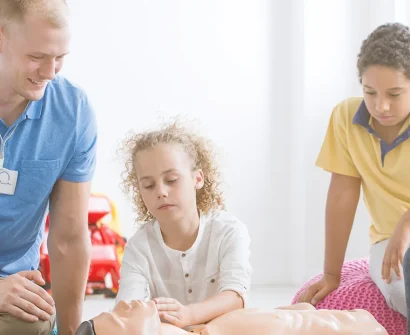Currently Empty: $0.00

Emergencies can happen when least expected, and having a well-equipped first aid kit at home is a crucial step towards ensuring the safety and well-being of your family. Whether it’s a minor cut or a more serious incident, being prepared can make all the difference in those critical moments. Here’s a guide on creating an effective first aid kit for your home.
Essentials for Your Home First Aid Kit:
1. Bandages and Dressings:
Stock up on a variety of bandages, sterile gauze pads, and adhesive dressings. These are essential for covering wounds and controlling bleeding.
2. Antiseptic Wipes and Solutions:
Keep a supply of antiseptic wipes and solutions to clean wounds and prevent infections. Alcohol wipes and hydrogen peroxide are good choices.
3. Adhesive Tape and Scissors:
Include medical tape and a pair of scissors for securing dressings and cutting tape to the desired length.
4. Pain Relievers and Medications:
Include over-the-counter pain relievers like acetaminophen or ibuprofen. If anyone in your household has specific medical needs, ensure you have an ample supply of their necessary medications.
5. Tweezers and Splinter Removal Tools:
Tweezers are handy for removing splinters or other small foreign objects embedded in the skin.
6. Thermometer:
A digital thermometer is essential for monitoring body temperature, especially during times of illness.
7. Emergency Blanket:
Keep a compact emergency blanket in your kit. These reflective blankets can help retain body heat in case of exposure to the elements.
8. CPR Face Shield:
Include a CPR face shield to provide a barrier while performing cardiopulmonary resuscitation (CPR).
9. Disposable Gloves:
Ensure you have a pair of disposable gloves to protect yourself when administering first aid.
10. First Aid Manual:
A comprehensive first aid manual can guide you through various procedures, offering step-by-step instructions.
Additional Considerations:
Personal Items: Add personal items such as prescription medications, medical records, and contact information for healthcare providers.
Emergency Contacts: Keep a list of emergency contact numbers, including local emergency services, poison control, and family contacts.
Location and Accessibility: Store your first aid kit in a central and easily accessible location. Make sure all family members know where it is kept.
Regular Check and Restocking: Periodically check the contents of your first aid kit. Replace expired medications and ensure that all items are in good condition.
By taking the time to assemble a well-thought-out first aid kit, you’re not just collecting items; you’re investing in the safety and preparedness of your household. Regularly review and update the kit to ensure that it remains a reliable resource in times of need. Remember, being prepared today can make all the difference in an emergency tomorrow.



